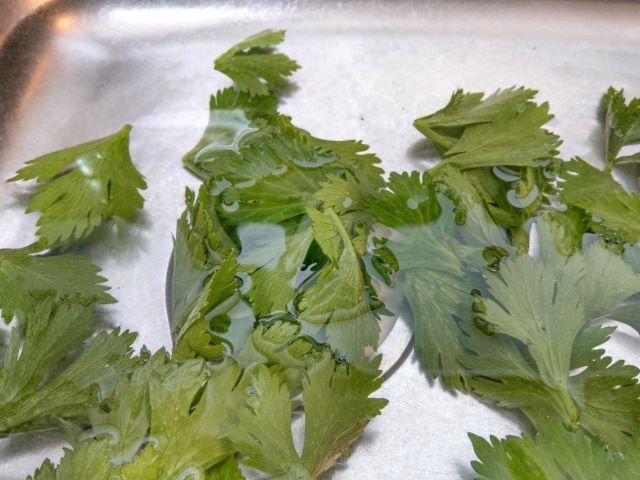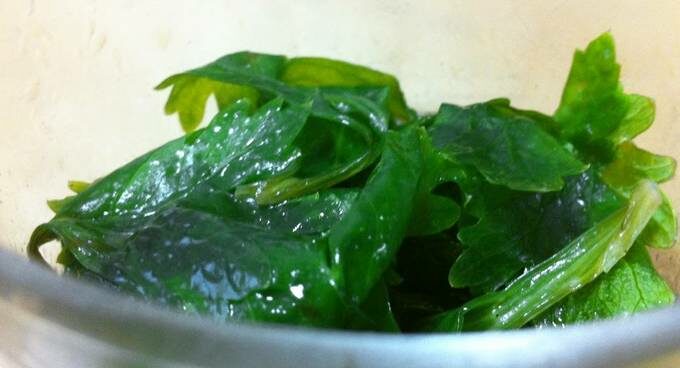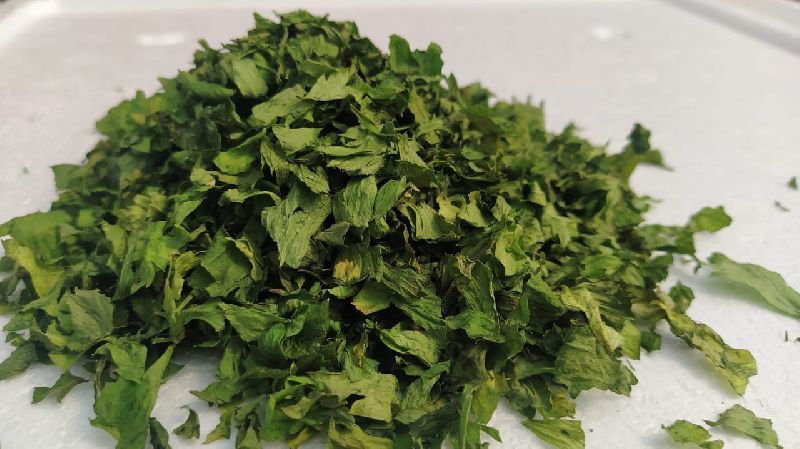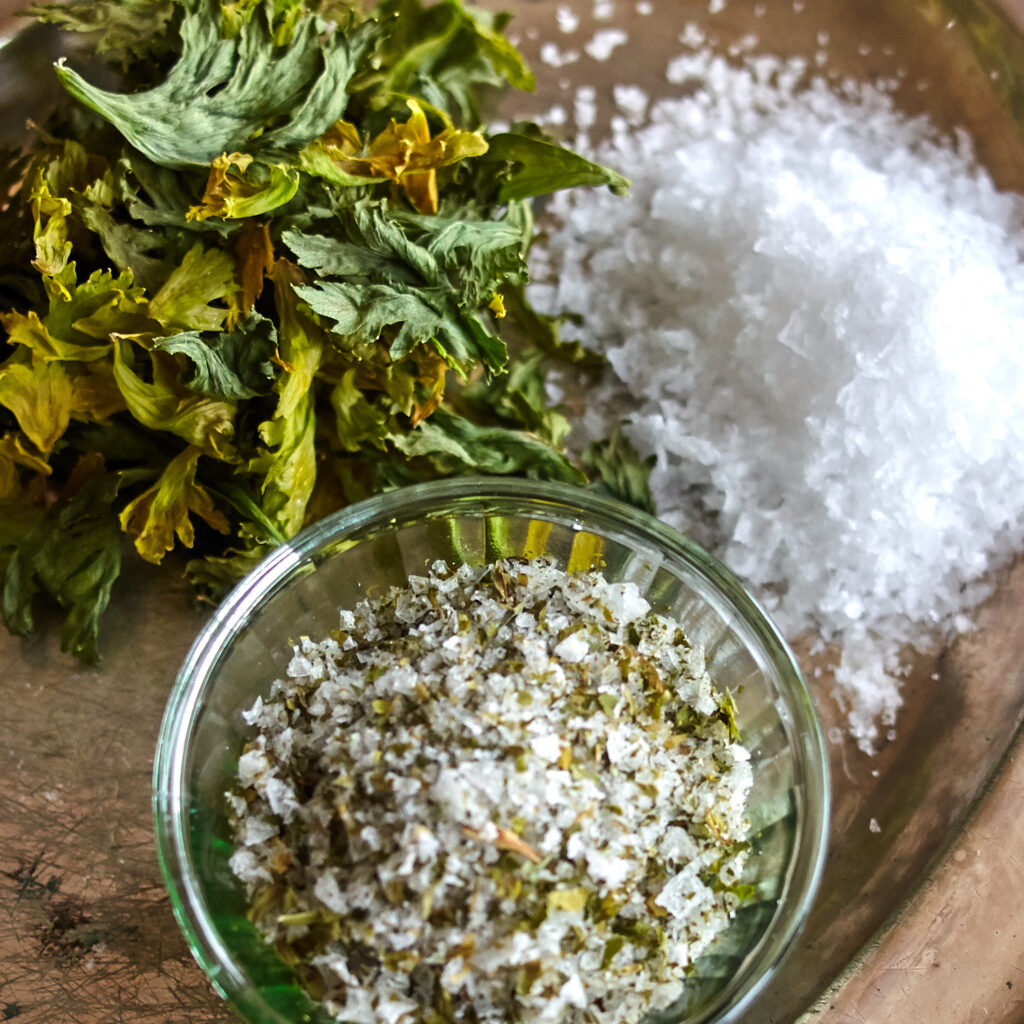Can you eat celery leaves?
Jump To:
Yes, you can eat celery leaves, they have a rich, intense flavor and are nutritious. You can prepare them as you would any other herb. Mix the tender leaves with salad greens, and vinaigrette. Use them in stir-fries, stock, soups, or sauces.
However, their tender texture is fine enough to consume raw. Celery leaves are edible and not toxic. Even if you ate several pounds of celery leaves each day, the toxic compounds found in the plant might still be affecting you very little.
Celery is unlike other vegetables in that nothing is wasted. All parts of the plant, including the stalks, leaf, aromatic, and bulbous roots, are edible. Celery that we recognize today is a descendant of wild celery which has fewer stalks but more leaves.
How to store celery leaves?
Foil or plastic wrap
You can store the celery leaves separately if you have to use stalks immediately but not the leaves. Celery leaves will last several days if stored in an airtight container and with a damp paper towel in a crisper drawer.

Pesto cubes are a common way to preserve fresh celery. You can also puree the celery leaves with some oil or water, and then freeze the mixture in an ice cube tray. This will make them last longer. You can add one cube to soups and stews when you need a boost of celery flavor.
Wash and dry celery leave with a paper towel. Chop those leaves finely and place them in an ice tray. Make sure you put enough leaves so that there’s space put in the preferred oil and leave space for the mixture to freeze. It takes only 5-10 minutes to prepare and then freezes in a matter of hours.
They’ll be ready in a matter of hours. They can be taken out and stored in a glass container, but you could also store them in Ziploc bags. Use within a few weeks.
Celery olive oil cubes can be used as a salad dressing. All you need is vinegar, some spices such as salt and fresh garlic. They can also be added to a vegan Caesar dressing. These oils can also be used to saute vegetables or meat.
Or, pickle celery leaves…
Pickled celery leaves
Celery leaves have a strong flavor that makes dishes too pungent so you keep them out of certain dishes like broth. Apart from drying celery leaves, a way to store celery leaves, you can also pickle celery leaves. Pickles are great in soups, stews, and meat marinades. These can also be fermented using a dry fermentation method that adds 2% salt to all of the vegetable material.

Pickling celery with vinegar
You’ll need, for one head of celery leaves, a pinch of red pepper flakes, lemon zest, and confit lemon peel, diced and blanched, white vinegar, water, and cane sugar.
Clean the celery leaves, then chop them into small pieces. Add the celery leaves to a bowl. Mix well. All of the ingredients should be packed into a pint mason container.
Bring the sugar, vinegar, and water to a boil in a small saucepan. This brine should be poured over the celery leaves mixture until it reaches 1/2 inch below the jar’s edge. Cover the jar with the lid and let it cool to room temperature.
Celery pickle without vinegar
Add salt, sugar, and spices to the lemon, leaves. Rub the leaves gently, making sure to not mash them but still allow their juices to flow. Place them in a container, the salt will draw out water from the leaves, creating a brine. This is essential to avoid mold growth in ferments. Cover the jar with a lid and let it sit at room temperature for 7-10 days. After a week, you can begin to taste the product. However, the more you leave it, the more flavor will be imparted to the leaves.
Or dry celery leaves to make celery salt to use as seasoning…
2. Dry celery leaves – How to dry celery leaves?
Dry the celery leaves in an oven or dehydrator and blend them with salt to make a seasoning. Dried celery leaves, and ground, can add an aromatic boost to your recipes, like spices.

Air Dry Celery Leaves
Wash celery leaves and dry them gently using a towel or a paper towel. Place the leaves on a drying rack or cake cooling rack. The leaves should not touch each other or overlap. The leaves should dry for five days.
After a few days, you may have to move them around to ensure that all areas get enough air. After the celery leaves have dried and become crispy, you can chop them up and place them in an airtight container. They should keep for at least a year if they are dry.
Oven dry celery leaves
You can dry celery leaves in an oven also, and place the washed leaves either on an oven rack or on a baking tray. Turn the oven to 150°F (65°C). Turn on the fan setting if your oven has one. The leaves should dry for 6-8 hours.
If you prefer to leave the leaves alone overnight, it is a good idea for them to be checked and given a turn. When the leaves have dried completely and are easy to crunch, you can break them up and place them in an airtight container.
Microwave dry celery leaves
You can dry celery leaves in the microwave if you need to dry them faster. But, there’s a chance the leaves will end up soft, not crispy, and dry.
Place the washed and dried celery leaves on a plate that is microwave-safe. Line it with two sheets of kitchen towel. Place another kitchen towel on top of the leaves. Then, microwave the leaves for one minute on high. Check them. You can dry the celery leaves again by placing them in the microwave for another 20-30 seconds, checking between.
Celery leaves will be dry when they crack rather than bend. You can always replace the kitchen towel if it feels damp at any point.
Dehydrator Dry Celery Leaves
It is simple to dry celery leaves with a drying rack. Place the washed celery leaves on dehydrator trays. Turn the temperature to 135°F (57°C), and let them dry for 6-10 hours. The air humidity will determine the drying time.
After the celery leaves have dried completely, crush them and place them in an airtight container. Dry celery leaves can be stored for up to a year if they are completely dried and kept out of direct sunlight.
Celery Salt
Dry celery leaves can be substituted for parsley in your cooking, and can also be used to make celery salt. Here celery salt recipe for you.

Add dried celery leaves to salt in a 2:1 ratio and mix well. You can double or half this ratio according to the quantity of celery you have or you want to make. Crunch up the dried celery leaves enough to mix well with the salt. You can grind the mixture to make it finer.
How to Eat Celery Leaves
- You can substitute fresh celery leaves in almost all recipes that call for it. Celery stalks have a stronger taste than celery leaves so you might need to use less.
- Celery is a common ingredient in French savory dishes. It is also known as mirepoix, which forms the basis of the recipe.
- Celery leaves make a great stock because they have maximum flavor and don’t require the crunch of stalks.
- They are great in soups and stews, as they retain their aromatic flavor.
- Fresh celery leaves taste great in tossed green salads. They can be left whole, or shredded to make coleslaws or oriental salads.
- For a fresh, aromatic flavor and an extra boost of nutrients, you can add frozen or fresh leaves to smoothies. Celery leaves can be bitter, so you should try a few before adding them to your smoothie. Celery leaves with smaller inner stalks are often sweeter.
- Crumbled celery leaves make a great addition to scrambled eggs. These leaves add flavor to your scrambled eggs without the need for a crunchy stalk.
- Parsley leaves can be substituted in recipes and used as a garnish.
- Celery pesto is delicious. Follow this recipe to make basil pesto by replacing the basil leaves with celery leaves. Basil pesto can also be made with celery pesto.
- When chopped celery leaves and other ingredients are included, most dishes will be bursting with flavor and nutrition.
